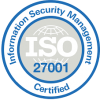From human errors to ineffective processes, issue management is a primary concern for companies across the globe. Issues of all sizes and importance lead to new risks and opportunities for your organization, and you must stay on top of them all to avoid making a critical mistake.
Are you managing your issues effectively? Do you have insight into the big picture? If you want to successfully identify, plan, and respond to events that hinder your ability to report and manage risk, book a TruOps demo here.
Having a stable issue management process in place to document and resolve issues throughout the company is the first step toward enterprise-wide risk mitigation. All departments and all projects should use the same format for tracking, remediating, and resolving issues—and keep in mind, the steps to your process might not always happen in the same order.
Document an issue in a central location as soon as it is identified. Emails might seem effective, but having a standard location to enter an issue immediately following its discovery is the key to full transparency. Once the issue is documented, you can start the process of resolving it with these six steps:
1) Assign the issue to the appropriate person.
Whether issues fall to a specific person or their allocation is already built into your process, assignment to an individual or committee will keep the issue moving. When you have no accountability, your remediation plan will suffer. Even if your primary contact delegates the issue to someone else later, the initial assignment ensures that no issues get lost.
2) Rate the issue’s risk or opportunity.
Issues are not always about risk—sometimes an issue is simply the recognition of an opportunity that could be addressed. To determine the priority of addressing issues and understand their risks or opportunities, each issue should be rated appropriately.
3) Determine if, how, and when the issue will be resolved.
Not all issues will be addressed. Issues that are not critical may be put on hold or even removed from the list, depending on how serious they are. If the issue requires remediation, document a plan and set a timeline. If an issue is not urgent, your plan may be vague—but you should always define some sort of “next step.”
4) Assign the remediation plan to the right individuals.
For smaller organizations, the original issue owner will probably be responsible for the remediation. However, for large companies, it will fall to someone different. Put your remediation plan in the right hands to prevent delays.
5) Regularly review the open issues and ensure that updates are documented.
If issues and remediation plans are never updated, the process will stop being effective. Implement regular reviews to identify when progress stalls and get your plan back on track.
As remediation is completed, audit the process to confirm that the issue is resolved.
Has the remediation plan been fully implemented? Was it effective in addressing the issue? Are you missing anything else that needs to be done? Answering these questions will help you identify potential holes in your solution and reduce errors.
6) Make sure you have technology in place to support your process.
The right technology is the foundation of your long-term success. You need resources that allow your teams to report issues, build remediation plans, and review the status of all issues across the company.
When we designed TruOps, we saw the need for a complete issue management solution that would give upper-level management real-time access to mission-critical data. To find out how TruOps can track audits and assessment findings, oversee issue and plan association, and track the status of ongoing remediation efforts, schedule a demo with me today.






